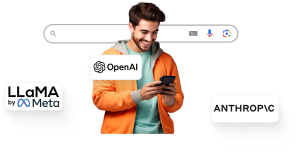Stanford Conference Explores Intersection of Blockchain and AI with Focus on Bitcoin Innovations

In mid-March, Stanford University held a conference on Blockchain and AI, gathering professors, startup CEOs, and venture capitalists (VCs). The event's main focus was the convergence of two significant technologies: blockchain and AI. However, the conference might have benefitted from a stronger focus on Bitcoin and AI, considering Bitcoin’s leading market position and the new innovations emerging in Bitcoin Layer 2 solutions. A key issue at the event was that blockchain and AI have largely developed as separate fields—each with distinct investors, entrepreneurs, researchers, and communities. Although the idea of merging these domains was ambitious, many speakers remained centered on their own specialties, struggling to draw clear connections between blockchain and AI. Arguably, calling it the Blockchain OR AI Conference would have been more accurate. For instance, a venture capitalist gave a broad overview of the AI sector, highlighting remarkable progress in image, audio, and code generation. Meanwhile, a DeepMind researcher addressed adversarial machine learning, where small tweaks to input data can drastically change an AI’s output. A notable example involved altering just a few pixels in a cat image, causing the AI to misidentify it as guacamole. On the blockchain front, conversations revolved around various protocols, yet much of the technology remains highly experimental or, in some instances, entirely theoretical. Integrations between blockchain and AI are still nascent, with real-world applications yet to materialize. Proof of Computation One of the more illuminating talks came from Dan Boneh, an applied cryptographer at Stanford, who spoke about SNARKs (succinct non-interactive arguments of knowledge) and zero-knowledge proofs. These address a core cryptographic challenge: efficiently proving knowledge of a computation. This principle is well established in blockchain and cryptography.
For example, factoring a large number into primes is computationally hard, but verifying the factorization by multiplication is easy. Similarly, finding a block header whose hash meets a target difficulty is costly, whereas verifying this proof is inexpensive. This gap between computation and verification is essential in blockchain systems, where nodes verify each other’s work continuously. In Bitcoin, nodes validate signatures and miners’ proof of work. SNARKs expand this concept, allowing cryptographic proofs that can be verified without exposing sensitive information. As AI agents become more autonomous, verifying computations while preserving privacy will be a significant challenge. Many users hesitate to upload sensitive data to platforms like OpenAI due to security concerns. This creates a strong need for privacy-preserving verification—a method that lets users prove an AI model performed a computation correctly without disclosing the underlying data. Such technology could unlock AI use cases in sensitive fields like healthcare, defense, and finance, where data protection is critical. It’s expected this will evolve into a multi-billion-dollar industry over the coming decade. Notably, this idea originates from blockchain networks implementing cryptographic techniques. As Boneh noted, the concept of one machine efficiently verifying another’s expensive computation arose from Bitcoin, but it may find a major second application in AI. Looking ahead, I hope future conferences will place more emphasis on Bitcoin’s contributions to these areas. For example, BitVM builds on zero-knowledge proof concepts to bridge Bitcoin and new Layer 2 protocols—potentially enabling AI agents to interact directly with Bitcoin’s ecosystem.
Brief news summary
In mid-March, Stanford University hosted a conference uniting blockchain and AI experts to explore their intersection. Although the goal was integration, most sessions treated blockchain and AI separately—blockchain discussions focused on experimental protocols, while AI talks highlighted advances in image, audio, and code generation alongside adversarial learning challenges. Dan Boneh stood out with a presentation on SNARKs and zero-knowledge proofs, cryptographic techniques rooted in blockchain innovations like Bitcoin’s proof-of-work. These methods enable efficient, privacy-preserving computation verification, with significant potential for AI as data privacy concerns grow and autonomous agents emerge. Privacy-preserving cryptography could unlock new applications in healthcare, defense, and finance, driving new markets. Furthermore, blockchain-based cryptography may facilitate collaboration between AI and Bitcoin’s Layer 2 solutions, such as BitVM, creating innovative opportunities within the Bitcoin ecosystem. Future conferences might better highlight Bitcoin’s foundational role in bridging blockchain and AI technologies.
AI-powered Lead Generation in Social Media
and Search Engines
Let AI take control and automatically generate leads for you!

I'm your Content Manager, ready to handle your first test assignment
Learn how AI can help your business.
Let’s talk!

Circle’s Native USDC Goes Live on World’s Blockch…
On Wednesday, June 11, the company announced that Circle’s USDC and the upgraded Cross-Chain Transfer Protocol (CCTP V2) had officially launched on World Chain.

Google's AI Mode for Search: Transforming User In…
Google has announced the launch of an innovative AI Mode within its search engine, aiming to transform how users engage with online information.

Il Foglio Integrates AI in Journalism with ChatGP…
Il Foglio, a leading Italian newspaper, has embarked on a groundbreaking experiment integrating artificial intelligence into journalism under editor Claudio Cerasa.

Crypto software company OneBalance raises $20 mil…
© 2025 Fortune Media IP Limited.

Meta's $14.3 Billion Investment in Scale AI to Ac…
Meta has revealed a major investment in the artificial intelligence sector by purchasing a 49% stake in the AI firm Scale for $14.3 billion.

Emmer’s Securities Clarity Act and Blockchain Reg…
Washington, D.C. – Last night, Congressman Tom Emmer’s Securities Clarity Act, along with parts of the Blockchain Regulatory Certainty Act (BRCA), successfully passed out of the House Financial Services Committee markup after being incorporated into the CLARITY Act.

UK Government Develops AI Tool to Expedite Planni…
The UK government is making substantial efforts to boost productivity in the public sector by utilizing artificial intelligence technologies.

 Auto-Filling SEO Website as a Gift
Auto-Filling SEO Website as a Gift








 Auto-Filling SEO Website as a Gift
Auto-Filling SEO Website as a Gift

